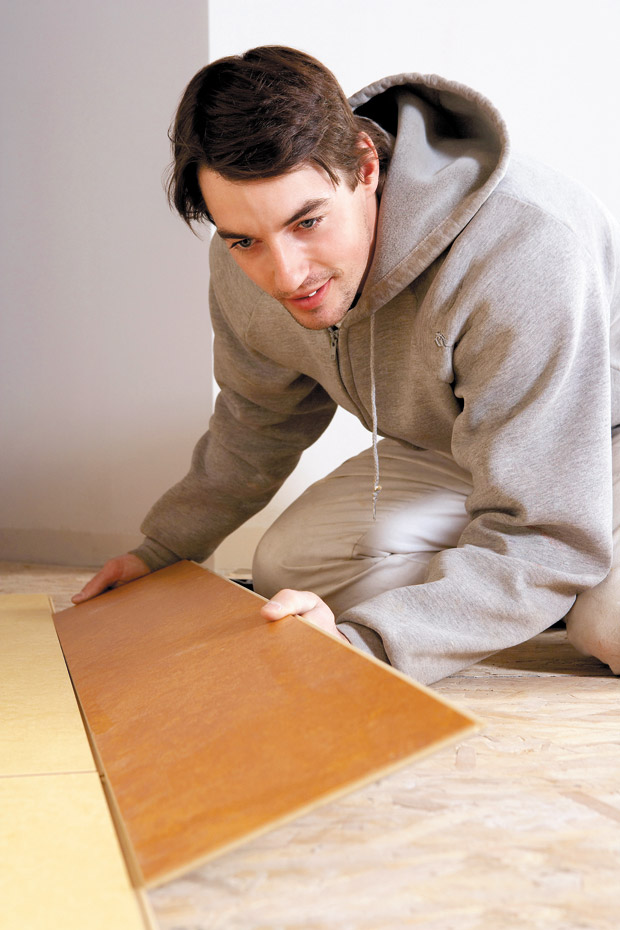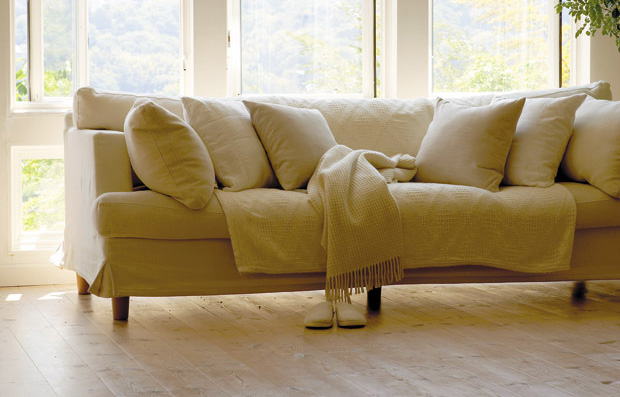When it comes to flooring, we often think of some basics: carpet, hardwood, laminate and tile. But one of the newest trends is giving us something else to think about: luxury vinyl planks (LVP). Vinyl planks have the benefits of sheet vinyl in that they are thin, water-resistant, relatively inexpensive, and can be installed over virtually any smooth existing flooring. However, unlike sheet vinyl, LVP are thicker, more durable and easier to install.
Remember to account for a change in floor thickness around door-jambs, underneath appliances, at the junction to another room, and at the tops of stairs. You may have to trim under door-jambs, add/remove floor underlayment in other areas, or install additional trim or transition pieces to account for the change in thickness.
Before installing vinyl planks, bring them home and place them in the room for at least 48 hours. Spread them out so that they can acclimate to the temperature. When it comes time to install, pick planks from different boxes as you go. This will allow for a varied pattern throughout.
Start things off with a smooth surface. If you have a wood or concrete floor, sand down high spots or humps. Fix any large cracks and smooth them out. If there are low spots, fill them with floor patch. Make sure that the surface is clean and dry, and that you remove baseboards before you begin.
Then, be sure to allow for partial planks. Measure the width of the room and divide by the width of the plank. This number will tell you the number of planks you need. The decimal will tell you the fraction of a plank that will need to be cut to fit. Start with this fraction and cut your plank accordingly. For instance, if there is .3 left, then you will need to cut your first row planks to one-third of their width before installing. Remember, too, to leave an expansion gap of about one-fourth inch around the perimeter of the flooring. This will allow for the flooring to naturally expand over time.
When cutting the planks, score and cut with a utility knife. Snap planks together by connecting them on the short end of the previous plank, holding at an angle, and working your way down the longer ends, folding and clicking into place.
Finally, it’s always a good idea to plan ahead. The end piece should be at least six inches long. If needed, trim the first plank to allow for this. Save the excess to start another row later on. When you move onto other rows, stagger the joints at least six inches.
Have a comment or question for Joanne? Send an email to thefixisin@gmail.com.

